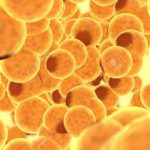Lien vers Pubmed [PMID] – 36960679
Lien DOI – 10.1111/imr.13199
Immunol Rev 2023 Mar; ():
Microbes have developed many strategies to subvert host organisms, which, in turn, evolved several innate immune responses. As major lipid storage organelles of eukaryotes, lipid droplets (LDs) are an attractive source of nutrients for invaders. Intracellular viruses, bacteria, and protozoan parasites induce and physically interact with LDs, and the current view is that they “hijack” LDs to draw on substrates for host colonization. This dogma has been challenged by the recent demonstration that LDs are endowed with a protein-mediated antibiotic activity, which is upregulated in response to danger signals and sepsis. Dependence on host nutrients could be a generic “Achilles’ heel” of intracellular pathogens and LDs a suitable chokepoint harnessed by innate immunity to organize a front-line defense. Here, we will provide a brief overview of the state of the conflict and discuss potential mechanisms driving the formation of the ‘defensive-LDs’ functioning as hubs of innate immunity.


